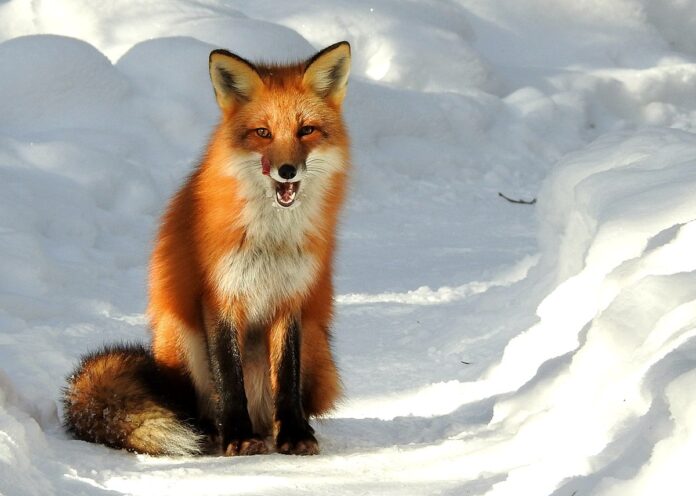If you’ve ever wandered through the woods at dusk or heard a faint rustle in your backyard late at night, chances are you might have encountered the elusive and enigmatic creature known as the fox. These cunning canines are not only fascinating creatures but also integral parts of ecosystems worldwide.
Introduction to Foxes
Foxes belong to the Canidae family and are closely related to domestic dogs, wolves, and other wild canines. With their distinct pointed ears, bushy tails, and keen eyes, foxes are well-adapted predators that thrive in a variety of habitats, from forests and grasslands to urban environments.
Physical Characteristics of Foxes
One of the most remarkable features of foxes is their diverse range of physical characteristics. Depending on the species and habitat, foxes can vary significantly in size, color, and fur texture. While the red fox is the most common species and is known for its reddish-orange fur, other species like the Arctic fox boast thick white coats to blend seamlessly with their snowy surroundings.
Types of Foxes
There are over 30 species of foxes worldwide, each uniquely adapted to its environment. Some of the most well-known species include the red fox (Vulpes vulpes), Arctic fox (Vulpes lagopus), and the adorable fennec fox (Vulpes zerda) found in the deserts of North Africa.
Behavioral Patterns
Foxes are primarily nocturnal creatures, meaning they are most active during the night. Their sharp senses of sight, smell, and hearing make them efficient hunters, preying on small mammals, birds, and insects. Foxes are also known for their cunning and intelligence, using clever tactics to outsmart their prey and potential predators.
Reproduction and Family Structure
Mating season for foxes typically occurs in the winter months, with females giving birth to litters of pups in the spring. Fox families, known as “vixens,” consist of a breeding pair and their offspring from previous years. Both parents play active roles in raising and caring for their young, teaching them essential survival skills until they are old enough to fend for themselves.
Adaptations to Environment
Foxes have evolved a range of adaptations to thrive in diverse environments. Their fur coats provide insulation against harsh weather conditions, while their keen senses and agile bodies enable them to navigate through dense forests and open plains with ease. Arctic foxes, in particular, have specialized adaptations to survive in frigid temperatures, including thick fur and compact body shapes to conserve heat.
Interactions with Humans
Throughout history, foxes have captured the imagination of humans, featuring prominently in folklore, mythology, and literature around the world. While admired for their beauty and intelligence, foxes have also been viewed as pests by some due to their occasional raids on poultry and small livestock. However, efforts to understand and coexist with foxes have led to more nuanced perspectives on their role in ecosystems.
Conservation Efforts
Despite their adaptability, fox populations face numerous threats, including habitat loss, hunting, and disease. Conservation organizations and wildlife authorities are working tirelessly to protect fox habitats and implement measures to mitigate human-wildlife conflicts. Through education and conservation initiatives, there is hope for ensuring the long-term survival of these captivating creatures.
Foxes in Popular Culture
Foxes have left an indelible mark on human culture, appearing in countless myths, fables, and works of art throughout history. From the sly and cunning Reynard the Fox in European folklore to the wise and mystical kitsune in Japanese mythology, foxes continue to inspire awe and wonder across cultures worldwide.
Myths and Misconceptions about Foxes
Despite their widespread cultural significance, foxes have often been misunderstood and misrepresented. Common myths about fox behavior, such as their alleged tendency to steal shoes or hoard treasures, have perpetuated misconceptions about these animals. By debunking these myths and providing accurate information, we can foster a greater appreciation for the true nature of foxes.
Foxes as Pets
While foxes may seem adorable and playful, keeping them as pets presents numerous challenges and ethical concerns. In many regions, it is illegal to own a fox as a pet due to their wild nature and specialized needs. Those who attempt to domesticate foxes often find that their natural behaviors, such as digging, scent-marking, and vocalizations, can pose challenges in a domestic setting.
Research and Study
Scientists and researchers have long been fascinated by fox behavior and ecology. Through field studies, genetic research, and behavioral observations, we continue to uncover new insights into the lives of these remarkable creatures. Understanding the ecological roles of foxes is crucial for informing conservation strategies and maintaining healthy ecosystems.
Foxes in Urban Environments
As human populations expand into natural habitats, foxes are increasingly adapting to urban environments. While some view urban foxes as pests, they play important roles in controlling rodent populations and contributing to urban biodiversity. Responsible management practices, such as secure garbage disposal and wildlife-friendly landscaping, can help minimize conflicts between humans and urban foxes.
The Future of Foxes
As we look to the future, it is essential to recognize the importance of preserving fox habitats and ensuring their continued survival. By supporting conservation efforts, promoting coexistence with foxes, and combating threats such as habitat loss and climate change, we can safeguard these iconic animals for generations to come.



